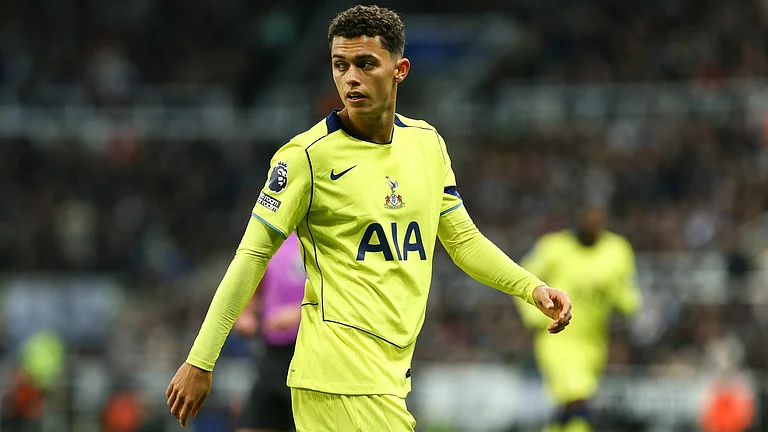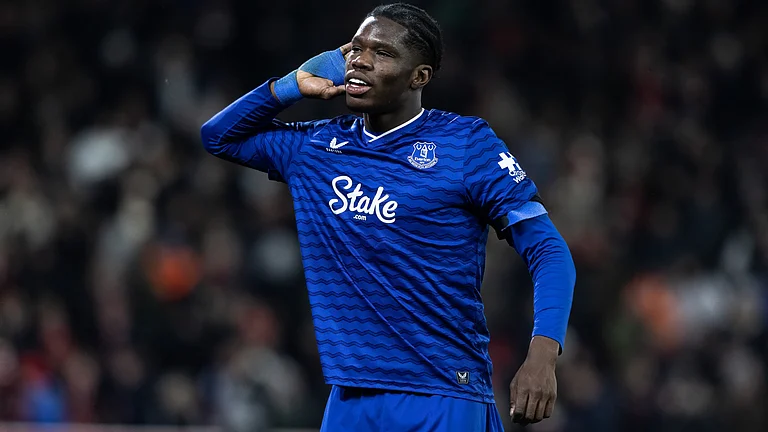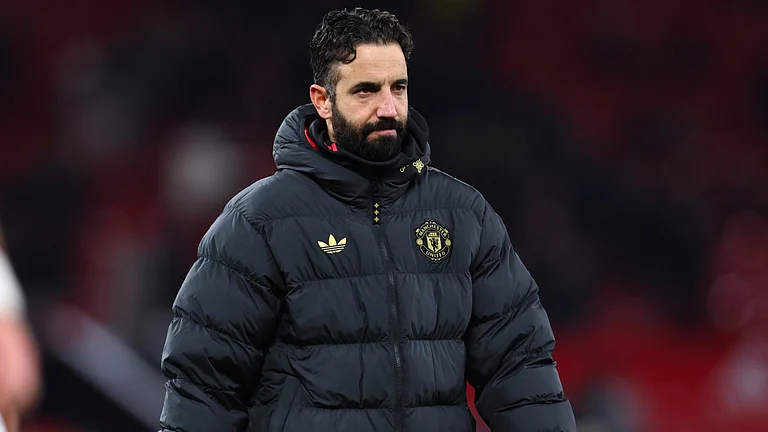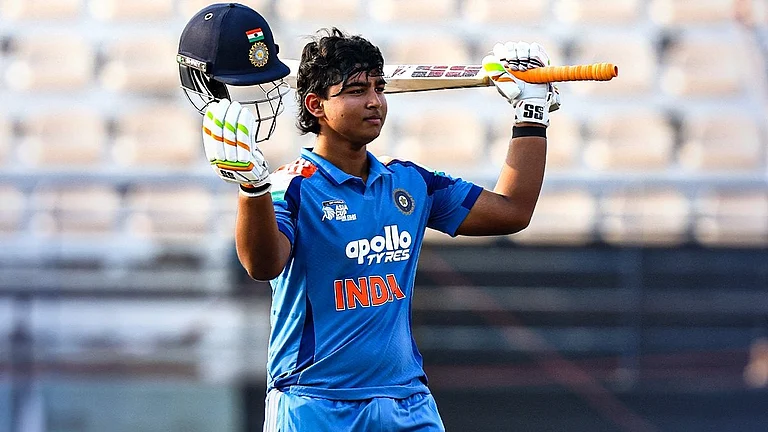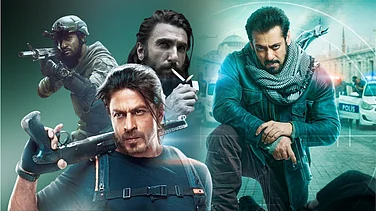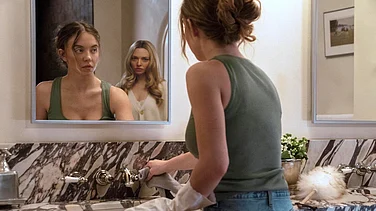A lady-in-white with the larynx of a Lata Mangeshkar, holding a flickering candle in the wind, wanders around a dilapidated mansion at midnight, singing a haunting melody scary enough to send shivers down the spine of the bravest.
A vengeful girl with her soul trapped in the crypt under a hoary duplex bungalow built by her rapist-killer is waiting impatiently for her tormentor’s unsuspecting descendants to come home a few centuries later to avenge the injustice meted out to her.
A clueless hunk breaks out in a sweat, hearing the mysterious sound of anklets that gradually leads him to trudge through a dense forest enveloped by a thick fog until he reaches the edge of a death valley.
A bimbette runs out of the bathtub, with a shriek loud enough to frighten the entire vampire empire, as she spots a shadowy voyeur across the window of her regal washroom. The blood oozing out of her shower adds to her agony.
Oh, Hindi horror movies have been really fun to watch despite predictable tropes and storylines. Pity, many movie buffs raised on the classics made by venerated Indian movie moguls or, for that matter, the Hitchcocks of the West have given such gems a miss! The loss, it goes without saying, has been entirely theirs. It is baffling to know that, unlike in Hollywood, none of the spooky flicks is ranked among the so-called classy cinema in Hindi. Far from it, horror has actually been dismissed as a low-brow genre by the condescending gentry and stiff-upper-lip critics. Thankfully, it has not undermined its popularity among the masses over the years.
ALSO READ: Horror As The Theme Of Our Lives
Tacky or not, horror movies have always had a loyal clientele that has patronised them with no preconditions attached, regardless of the absence of big stars or good production values. Only the filmmakers with a shrewd business sense, such as the Ramsay brothers, for example, could make the most of the popular genre despite all the scorn heaped upon them by the rest of the film fraternity for many years. The Ramsay brothers, a one-of-its-kind clan of seven siblings, should be credited with having redefined horror in Indian cinema in the 1970s and ’80s with movies made on shoestring budgets, which were often brushed aside as too cheap to be taken seriously but enjoyed a cult following of their own.

Bestowed with different skills of filmmaking, one Ramsay brother wrote the story, while another worked on the camera. Under the watchful eyes of family patriarch F.U. Ramsay, they all worked together in harmony with Shyam and Tusli taking over the responsibilities of directors. Their first horror hit Do Gaz Zameen Ke Neeche (1972) set the template of their typical movies. A string of successes like Darwaza (1978) and Saboot (1980) followed. It is to their credit that their banner survived the era of superstars and multi-starrers when no A-list star or technician was willing to work with them. And even if they were, the Ramsays could hardly afford them at the time. But that did not bother them much, as they delivered hits with stars like Navin Nishchol, Mohnish Bahl, Arti Gupta, Hemant Birje, Jasmine and, above all, Anirudh alias Ajay Agrawal, who played the Dracula-like ghost in many movies such as Saamri (1985).

For the uninitiated, the Ramsays burst on the scene in the early 70s when Rajesh Khanna was ruling the roost as a superstar and lasted long enough to see through the Amitabh Bachchan era. In fact, their Purana Mandir ran more than Bachchan’s Inquilab at the box office in 1984, taking trade pundits by surprise. As late as 1988, they could deliver a big hit like Veerana in spite of rampant video piracy that had made horror classics from Hollywood and European cinema easily available to film aficionados.
Interestingly, the Ramsay phenomenon, though rarely acknowledged by film historians, also coincided with the rise of the middle-of-the-road cinema movement spearheaded by the greats such as Shyam Benegal, M. S. Sathyu and others of their ilk. But the Ramsay brothers braved all the challenges by churning out heady cocktails of horror, sleaze and comedy. Even though the family audience and the kids kept away, their patrons mostly consisted of youths and single men who did not mind seeing their films more than once. Obviously, Bollywood had a diverse audience for different kinds of films in those days.

The Ramsays, on their part, remained unapologetic about the much-maligned content of their films and never deviated from their familiar territory or storylines replete with predictable twists, turns and stereotypes. Almost all of their films started with a group of youngsters landing at a deserted haveli, only to find it in the possession of a wandering ghost. A bumbling caretaker and his buxom wife would be the only ones who lived there. In between many romantic and comic interludes, scary situations would take the narrative forward, ultimately to a bloodcurdling climax where a divine trishul or a holy cross came to the rescue of the good guys in their fight against the evil souls. Phew, the Ramsays knew what their audiences expected of them like the back of their hand.
That was, mind you, no era of computer graphics and all they could import from abroad were a few scary masks to create fear and keep the audiences on the edge of their seats in the theatres. It was by no means an ordinary feat, to say the least. But as they say, all good things come to an end. By the 1990s, the popularity of horror movies (read the box-office returns) had diminished. With the advent of the satellite channel, they shifted to television, making hit serials like Zee Horror Show (1993-2001) with the same signature tunes that once gave goosebumps to the lovers of their ventures.

It would be no exaggeration to say that the Ramsay brothers, once mocked for delivering cheap thrills, went on to acquire a cult following during the internet era. The millennials watched their movies without being judgemental and found them, with considerable amusement, to be a heady mix of horror, sex and comedy with good music thrown in. No matter how history will judge them in the ultimate analysis of their contribution to Hindi cinema, there was no denying the fact that they knew their job, a fact proven by the fact that a filmmaker of Vijay Anand’s repute, impressed with their work, had asked the Ramsays to direct his film, Ghungroo Ki Awaaz (1981).
ALSO READ: The Ghost As A Metaphor In Bengali Cinema
The Ramsay brothers were, however, not the pioneers in horror movies as far as Hindi cinema is concerned. The credit goes to director Kamal Amrohi for his Ashok Kumar-starrer Mahal (1949), which not only established Madhubala as the most beautiful face of Indian cinema but also heralded Lata Mangeshkar as the nightingale, with songs like Aayega aanewala, which became a benchmark for all the subsequent movies made on the theme around ghosts and reincarnation.

Surprisingly, Mahal’s success did not set off a trend of reincarnation movies as such in the 1950s, when the triumvirate of Dilip Kumar-Raj Kapoor-Dev Anand ruled the industry with their individual brand of movies. Bimal Roy’s runaway hit Madhumati (1958) was the only exception in that decade. However, in the 60s, Bees Saal Baad (1962), Kohra (1964) and Woh Kaun Thi? (1964) made waves, though more for their melodies than for scaring the audiences out of their wits. Most of those movies inspired by Hollywood classics like Rebecca (1940) and Psycho (1960) in that era had great compositions by the likes of Madan Mohan and Hemant Kumar. But the trend did not last long in the age dominated by romantic musicals. It was finally left to the Ramsay brothers to come up with a unique brand of horror movies.
ALSO READ: The ‘Spirit’Of Filmmaking
In the 70s, some horror or supernatural thrillers made by filmmakers from outside the Ramsay banner did hit the screens. Raj Kumar Kohli’s multi-starrers, Naagin (1976) on shape-shifting snakes and Jaani Dushman (1979) on a possessed man who kills all newly-wed brides, became major hits but most other horror films such as Feroz Khan-starrer Jadu Tona (1977), based on Hollywood-hit, The Exorcist (1973) bombed. Even Danny’s directorial maiden venture, Phir Wahi Raat (1980) with Rajesh Khanna in the lead, was not lapped up by the audiences the way the horror-loving audiences rooted for an average Ramsay movie.

After the Ramsay brothers shifted to the small screen and faded out from the big screen, filmmakers like Ram Gopal Varma, Vikram Bhatt and Ekta Kapoor took turns to take the genre forward with Raat (1992), Raaz (2002), Bhoot (2003) and Ragini MMS (2011). Priyadarshan also delivered a massive hit in Bhool Bhulaiyaa (2007) which propelled Akshay Kumar to the big league. It also led other big stars including Amitabh Bachchan to dabble in feel-good horror with films like Bhootnath (2008) and Bhootnath Returns (2014), which had great production values but fewer scary moments. All this while, nobody could dislodge the Ramsay brothers as the undisputed king of horror films—good, bad or ugly. It is in the fitness of things that a big star like Ajay Devgn is co-producing a biopic of the legendary Ramsay siblings now.
ALSO READ: Resident Evil: The Zombie Apocalypse In Goa
In the past decade or so, several horror movie makers have sought to deviate from Ramsays’ worn-out template by trying out different subjects. In 2013, Saif Ali Khan’s Go Goa Gone was touted as Bollywood’s first zombie-comedy, though it did not click. The year 2018, however, proved to be a turning point in the history of horror films with Sohum Shah’s Tumbbad and Anushka Sharma’s Pari seeking to further avoid the beaten track. But horror as a genre gained real momentum with the super success of Rajkummar Rao’s Stree which heralded a slew of horror-comedies. It taught Bollywood a new trick of scaring the wits out of the audiences while tickling their funny bones at the same time. Their treatment was of course different from the Ramsays who did not believe in doing things in a subtle way. Earlier, Mehmood had also experimented with horror-comedy with Bhoot Bungalow way back in 1965 while Shah Rukh Khan (Chamatkar/1992) and Salman Khan (Hello Brother/1999), attempted it in the 1990s but the genre had failed to click.
What was remarkable about Stree’s success was that it was inspired by a folk tale from Karnataka called Nale Ba (Come Tomorrow), which was about a wandering spirit that knocks on the doors in a village at night. Unlike most horror movies from the past, its makers did not apparently look westwards to seek inspiration from the Frankenstein, Dracula, or Werewolf series of the Western cinema.
Now, with the success of movies like Stree, Golmaal Returns (2017) and Roohi (2021), horror-comedy has emerged as one of the most sought-after genres in Bollywood. Shunning their past prejudices against horror movies, many new-age filmmakers now believe it to be one of few genres, such as war movies or lavish period dramas that hold immense potential for the big-screen cinema in the face of the invasion by over-the-top (OTT) platforms. Given the way Bollywood had treated horror in the past, it finally appears to be getting its due.
(This appeared in the print edition as "Brothers Grim")
ALSO READ







